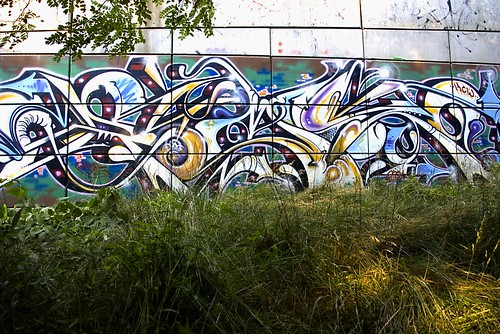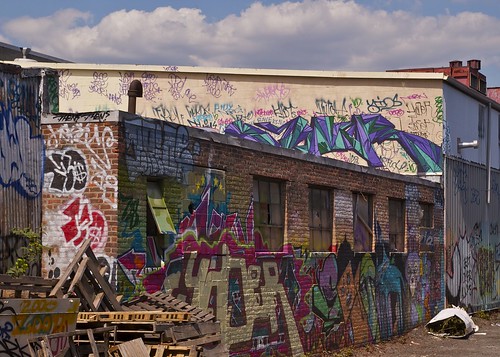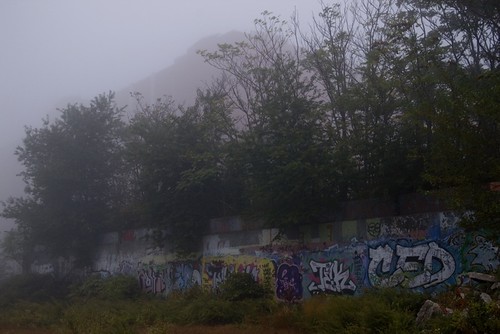My proposal didn't make the cut for Theorizing the Web 2015 (currently in its 2nd day), so I thought I'd post my abstract anyhow, along with a link to my posts on the subject, something I call the World-Wide Wall.
What is the World-Wide Wall?
It's all the graffiti in the world considered as a single object.
What's that have to do with the Web?
Without the Web, it wouldn't exist as a single object.
The Web and the World-Wide Wall
The ARPANET was created at roughly the same time, 1969-1970, that teenagers were spray-painting their tags on the walls of Philadelphia and New York City. Two decades later the ARPANET had matured into the public Internet while the World-Wide Web and graffiti had become a world-wide artistic phenomenon that had given birth to street art. These two phenomena came together in May 1994 when Susan Farrell began posting graffiti photographs to Art Crimes, the first graffiti site on the web, which is still live today. Many other graffiti sites have followed. Thus the web has become an integral component of graffiti culture. The object of this presentation is to explore the possibility that the web and graffiti/street art have become so intertwined that they function together as a World-Wide Wall, a massive continent-spanning quasi-living manifestation of the human drive to lay claim to the world through artistic expression.
To make the argument I will: 1) review of the role that photography has had in graffiti culture since the early 1980s and continuing on through the contemporary web, 2) consider the recent Underbelly Project, which made worldwide headlines based only on photos (the site itself is inaccessible), and 3) examine the communal nature of graffiti on its own terms and in the terms that danah boyd developed for theorizing networked public spaces in It’s Complicated: The Social Lives of Networked Teens (Yale UP 2014). Drawing on the ideas of Bruno Latour I will then argue that, while it is easy enough to argue that, yes, the world-wide production of graffiti and street art does constitute a single social being, that it is not clear what kind of social being it would be unless the people who participate in it explicitly conceptualize it as a single socio-cultural entity of a new kind. If and when we start doing that, what kind of entity would THAT be, existing as it does outside any nation-state? It is not simply that the same artists work on walls on several different continents, but that much of this work is illegal, that is, it is done outside the ‘color’ of any governing body.



No comments:
Post a Comment